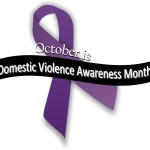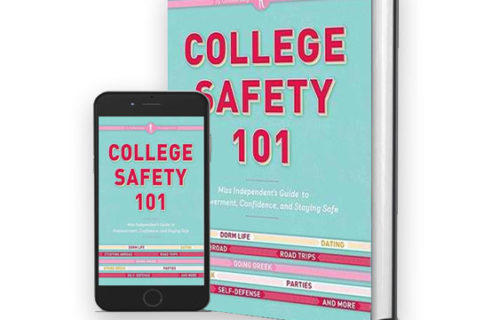Domestic Violence: Recognize the Red Flags BEFORE it’s too late…
 The following blog outlines the definition of Domestic Violence, along with the different categories of abuse. But, to truly make sure that you do not find yourself in an abusive or dangerous relationship, you must learn to recognize the “Red Flags” of an abuser and steer clear! Please read and pass it on to every woman you know, it could save a life.
The following blog outlines the definition of Domestic Violence, along with the different categories of abuse. But, to truly make sure that you do not find yourself in an abusive or dangerous relationship, you must learn to recognize the “Red Flags” of an abuser and steer clear! Please read and pass it on to every woman you know, it could save a life.
Love means never having to say, “I’m sorry I punched you in the eye” and other lessons in recognizing domestic abuse…
Hey Batterer, Batterer
Battering is a way for a person to establish power or control over another person through fear and intimidation. This can include the threat or use of violence. The batterer (or abuser) believes that he is entitled to control another. Assault, battering and domestic violence all are crimes.
Definitions: Domestic abuse can take many forms. It may include emotional abuse, economic abuse, sexual abuse; using children, threats, intimidation and power. Women are the most common victims of this violence, but elder and children abuse also is prevalent.
Categories:
Physical Battering—The abuser’s physical attacks or aggressive behavior can range from bruising to murder. It often begins with what is excused as trivial contacts which escalate into more frequent and serious attacks.
Sexual Abuse—Physical attack by the abuser often is accompanied by, or culminates in sexual violence wherein the woman is forced to have sexual intercourse with her abuser or take part in unwanted sexual activity.
Psychological Battering—The abuser’s psychological or mental violence can include constant verbal abuse, harassment, excessive possessiveness, isolating the woman from friends and family, deprivation of physical and economic resources and destruction of personal property.
The most important thing to remember about battering is: it escalates. It often starts with behavior like name calling, violence in the victim’s presence (like punching a fist through a wall in anger) and/or damaging objects or pets. It may escalate to restraining, pushing, slapping, and/or pinching. The batterer also might throw in a little punching, kicking, biting or tripping. Sexual assault and throwing the victim around might come into play, as well. Finally, the behavior may become life-threatening–choking, breaking bones or using weapons.
* * * * *
Between two and four million women every year are battered by their spouse or partner.
(According to the American Medical Association)
* * * * *
Red Flags
Signs often occur before actual abuse and can serve as red flags, or warnings before actual abuse starts.
1. Did he grow up in a violent family?People who have been abused as children or in homes where one parent beats another have grown up learning that violence is normal behavior.
2. Does he tend to use force or violence to solve his problems? A guy who gets into fights, likes to talk tough and has a quick temper is likely to act that way toward his wife and kids. Does he punch or throw things when he gets upset? Does he overreact to problems or frustration? Is he violent toward animals? Does he have a criminal record? (That one is an obvious beacon of warning). Any or all of these behaviors may be a sign of a person who resolves dissatisfaction or aggravation with violence.
3. Does he abuse alcohol or other drugs?There is a strong link between violence and problems with drugs and alcohol. If he refuses to admit or accept that he has a drug dependency or alcohol problem and refuses to get help, DO NOT think you can change him.
4. Does he have strong traditional ideas about what a man should be and what a woman should be? Look, this isn’t the 1950’s anymore; marriage is a partnership, not a dictatorship. Does he think a woman should stay at home, take care of her husband and follow all his orders and direction? Does he prohibit expression of ideas or concerns? Do you feel like a prisoner in your own home? This mindset leads to dysfunction and destruction.
5. Is he jealous of your other relationships?—Not just other men that you may know, but also with your women friends and family. Does he keep tabs on you? Does he want to know where you are at all times? Does he not let you socialize with your friends without him coming along? Does he isolate you at his side constantly? Remember: Possessiveness leads to aggressiveness.
6. Does he have access to guns, knives or other lethal instruments?Does he threaten to use weapons against people to get even? Does he have a fascination with guns or other types of weapons? (A guy with a healthy fascination with cars or sports is a better bet).
7. Does he expect you to follow his orders or read his mind?Does he become unusually angry if you do not fulfill his every wish (you are not “I dream of Genie”), or if you cannot anticipate his every want and need?
8. Does he go through extreme highs and lows? This behavior can seem as if he’s almost two different people; really sweet and kind at one time and extremely cruel or violent at another.
9. When he gets angry, do you fear him? Do you find that you feel as if you are walking on eggshells around him? Do you always do what he wants you to do rather than what you want to do? Does a major part of your life revolve around not making him angry?
10. Does he treat you roughly? Is he physical with you if you do not do what he wants? Does he lash out at you if he is frustrated? Shoving, pushing, or kicking is considered rough treatment.
If the guy you’re involved with has any or all of these traits, reconsider the relationship before it goes any further. It’s up to youto set standards for yourself.While the wild, bad boy might be attractive and sexy in Hollywood movies, in the real world they lead to nothing but trouble and heartache. Set higher expectations for men whom you have relationships with, and you’ll be surprised at the number of nice guys you’ll attract.
NATIONAL DOMESTIC VIOLENCE HOTLINE: 1-800-799-7233 (SAFE)


